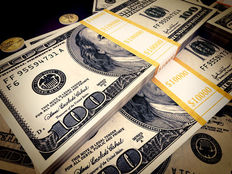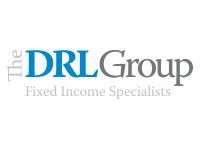
Bonds are the cornerstone of traditional debt financing for both the public and private sector alike, and present good investment opportunities for a relatively safe and steady cash flow. Accrued interest is one of many concepts one should be familiar with before a trade is executed in order to be an effective and knowledgeable bond investor.
What is Accrued Interest?
To put it simply, accrued interest is the total interest accumulated on a bond since its last coupon date. If the current holder of a bond decides to sell in between coupon payments, the bondholder is still eligible to receive the payment of interest through the moment of sale, even though the next coupon is yet to be paid. The bondholder still gets credit for the amount of time he or she held on to that bond, meaning the interest accrues between coupon payments on a pro-rated basis. The formula detailing the calculation of this accrued interest is outlined below.
The accrued interest is paid by the buyer of a bond to the seller; the issuer is not involved in the process. The accrued interest payment is added to the market price, so bonds will always cost more than the quoted price. The reason that accrued interest is added on top of the market price, rather than adjusted into the price, is to limit the volatility that would occur in the bond market. This unnecessary volatility would occur even though there are no changes in the bond market or the strength of a specific bond; to combat that potential issue, the accrued interest concept is used.
Why Do I Need to Pay Accrued Interest?

A potential bond buyer might ask, “Why do I need to pay this accrued interest?” The answer is, because only the bondholder of record can receive interest payments on the coupon date, otherwise it unfairly disadvantages a former bondholder who sold the bond in between coupon payments. The former bondholder still needs to be compensated for their period of ownership, regardless of whether or not they sold it. To combat this issue, the party buying a bond will pay the accrued interest to the seller of the bond on top of the price of the bond during the sale. The bond buyer is then reimbursed at the next coupon date as they will receive a full interest payment even though they only held the bond for a portion of the time since the last coupon payment.
How is Accrued Interest Calculated?
The concept behind calculating accrued interest is relatively easy to understand. Here is a step-by-step formula to calculate the accrued interest of a potential bond buy or sale.
- Step 1: Calculating the Amount of Time of Accrued Interest
Factor = Time Held After the Last Coupon Payment / Time Between Coupon Payments
- Step 2: Calculating the Proper Interest Rate
Interest Rate per Payment = Annual Interest Rate (Coupon) / Number of Payments per Year
- Step 3: Calculating the Accrued Interest
Accrued Interest = Face Value of the Bonds x Rate (Step 2) x Factor (Step 1)
For example, let’s say that you are planning to buy a bond with a $10,000 face value and a 5.0% coupon that pays semiannually (which most bonds do) on March 1 and September 1. You are buying the bond on November 30, right before the three-month anniversary of the last interest payment made on September 1. Let’s plug these numbers into the formula outlined above to find the accrued interest that must be paid to the seller.
Note: It is standard practice in the bond world to assume that all months have 30 days regardless of the actual amount of days in a given month; therefore, a year would be 360 days. For this example the time held after the last coupon payment would be 90 days [3 months x 30 days] and the time between coupon payments would be 180 days [6 months x 30 days].
Step 1: Factor = 90 days / 180 days = 0.5
Step 2: Interest Rate = 5.0%, Interest Rate per Payment = 0.05 / 2 payments per year = 0.025
Step 3: Accrued Interest = $10,000 × 0.025 × 0.5 = $125
The buyer would be paying the seller an extra $125 on top of the price of the bond during the transaction of the bond sale. However, the buyer would also receive a coupon payment of $250 in three months on March 1; this makes up for the previous accrued interest payment when they bought the bond three months earlier. Do not be too alarmed if the formulas are a bit over your head. Neither the dealer, seller, nor buyer have any discretion on how accrued interest is computed in the exchange process; it is an objective calculation that follows securities industry rules.
The Bottom Line
Accrued interest is interest that is recognized but not yet paid or received due to the difference in timing of cash flows. It is added on to the face value of bonds in order to compensate the former bondholder for their period of ownership. Keep accrued interest in mind next time you think about buying or selling a bond.






